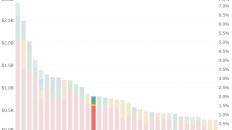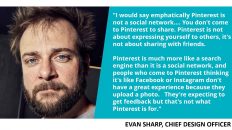$TSLA Bull Thesis Part 01 – The Gigafactories
Tesla is one of the most difficult companies to really understand and even more difficult to value. It's not a car company, it's not an energy company, and it's not a software company. Despite climbing by well over 500% percent in the last 2 years, $TSLA is still a company with plenty of growth in front of it. In this quick article, I want to highlight what could end up being their most #longterm advantage, which is their manufacturing capability via the #gigafactory concept (according to #elonmusk). In my opinion, Tesla is a world leader in #robotics and #automation, which allows them to rapidly iterate on machines and #manufacturing processes to squeeze the most out of every resource they have!
Current car bodies are made up of hundreds of individual parts, which are made of many different materials, and must be joined together in several different ways—welds, bolts, and adhesives:

(Shown above: Tesla's structural battery pack and front- and rear gigacastings)
Tesla is going to use the #gigapress to create two castings for the front and rear underbody sections, and to connect them with a structural battery pack. Also, here's a fun fact: To make these gigacastings happen, Tesla had to create their own aluminum alloy that doesn't need heat treatment to be strong!

(Shown above: heatmap of Tesla's innovative no-coat aluminum alloy)
The final result of building the car with gigacastings and a structural battery pack is that Tesla's would be up to 10% percent lighter and gain 14% percent increased range. Just to be clear, 14% percent on a 300-mile range is an extra 42 miles per charge. If Tesla's competitors don't start doing this, they'll need to find another way to close that 14% percent range gap. It's a huge differentiator.
By iterating on and upgrading their machines several times a year, Tesla is constantly pushing the state of the art in manufacturing. Here's an example of how their expertise in battery technology and manufacturing are coming together for huge wins:

(Shown above: Tesla's wet electrode process as of their most recent Battery Day)
Note the human on the left of each row for scale. Currently, their wet process for making batteries requires several massive machines and processing plants to mix, coat, dry, and compress the electrodes. Their new dry electrode process turns the mixed powder directly into film. The powder takes far fewer, smaller machines to mix and can be applied as coating without being dried or compressed. This is a 10 TIMES reduction in the footprint it takes to make their electrodes, meaning they could make 10 TIMES more of it in the same space their current electrode processing takes today. Here's another look at traditional cathode processing versus Tesla's new cathode process:

(Shown above: Tesla's dry electrode process as of their most recent Battery Day)
Just like Elon Musk often points out, future gigafactories are going to be MUCH more efficient than existing ones, which is good, because today's battery factories can't scale fast enough to meet all of the energy demands of humanity in a clean way. Tomorrow's gigafactories might. When “every automaker has self-driving cars and is building electric vehicles” (a quote from #elonmusk which could never come true in the first place), Tesla's advantage will be HOW they build these machines, not the machines themselves. This is just a taste of Tesla's huge lead in manufacturing, which is just one of their key advantages.
Want to learn more about $TSLA and their key advantages? Check out my video that highlights them: https://www.youtube.com/watch?v=qTKpjwuKgOI
Want more content like this? Subscribe to Ticker Symbol: YOU on YouTube and follow me on Twitter!
🙏 Thanks for reading!
⚡ Alex @













